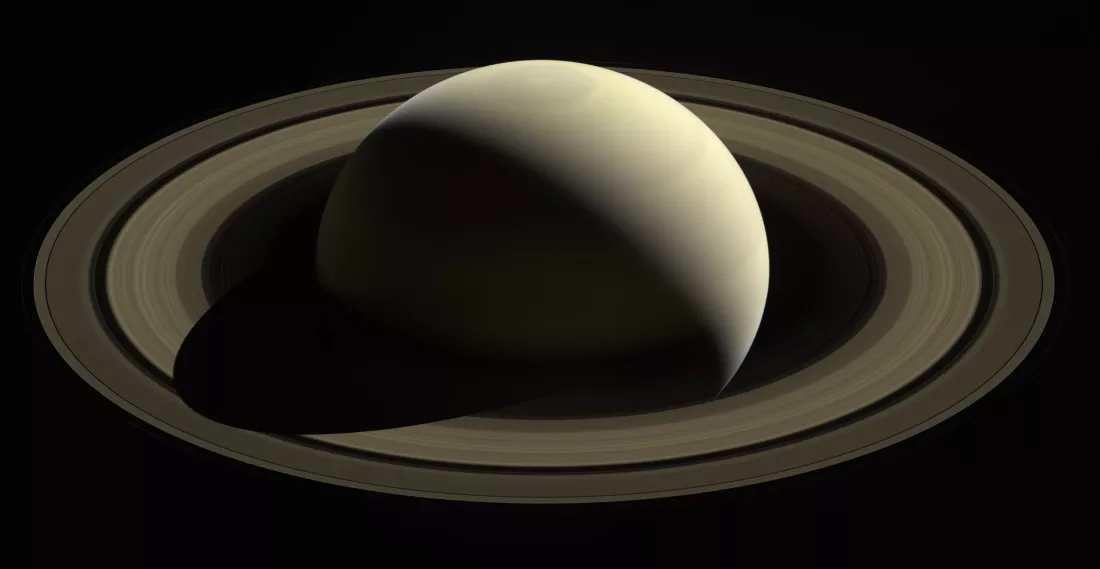The big picture: The complex, majestic system of rings orbiting Saturn is one of the most striking views our Solar System has to offer. Astronomers have watched and examined Saturn’s rings for centuries, yet an unprecedented phenomenon was hiding in plain sight before a recently published paper finally revealed its features.
Saturn is getting a little bit hotter because of the rings’ interaction with the planet’s upper atmosphere. A secret “hiding in plain view” for 40 years has now been revealed, thanks to research led by Lotfi Ben-Jaffel and published in Planetary Science Journal at the end of March. A “veteran” astronomer at the Institute of Astrophysics in Paris and the Lunar & Planetary Laboratory, University of Arizona, Ben-Jaffel re-examined data collected by five different missions to unveil one of Saturn’s most surprising phenomena.
There is a never before seen interaction between Saturn and the rings system, the researcher said, as fragments of those rings rain down onto the planet’s atmosphere producing an excess of ultraviolet (UV) radiation emitted by excited hydrogen atoms. The rings are made of icy and rocky fragments, which orbit Saturn at different speeds.
The rings are slowly disintegrating, and the escaped fragments are unavoidably captured by Saturn’s gravity as soon as they leave their stable orbit. It’s a well-known phenomenon thanks to NASA’s Cassini probe plunging into the planet’s atmosphere in 2017, Ben-Jaffel said, but its influence on the atomic hydrogen is a surprise.
Ben-Jaffel used precise observations from the Imaging Spectrograph (STIS) aboard the Hubble Space Telescope, comparing UV data to the distribution of light from multiple space missions and instruments. In addition to Hubble’s observations, the researcher looked at data collected by the aforementioned Cassini probe, the twin Voyager missions launched in 1977 and the now-retired, satellite-based International Ultraviolet Explorer (IUE) mission launched in 1978.
Data previously scrapped as noise in the detectors was now shining a completely new light: after calibration, the researchers clearly saw that “the spectra are consistent across all the missions.” Thanks to Hubble’s reference point on the rate of transfer of energy from the atmosphere as measured over decades, Ben-Jaffel said, we now know that there is an excessive production of UV energy in Saturn’s atmosphere.
The best explanation of the newly observed phenomenon is that the icy ring particles raining down into Saturn’s atmosphere cause this heating process, the researcher said. Now that we know the origin of this phenomenon, we can apply our new knowledge to deep space exploration as well.
“We are just at the beginning of this ring characterization effect on the upper atmosphere of a planet,” Ben-Jaffel stated, and we’ll need to develop a “global” approach to get a signature about the atmospheres on distant worlds. The goal: searching for “exo-rings” systems around planets orbiting other stars.

